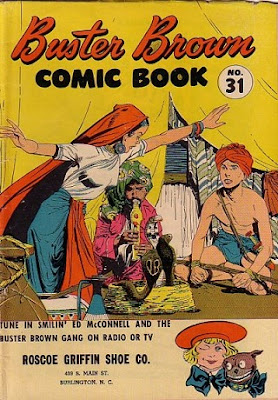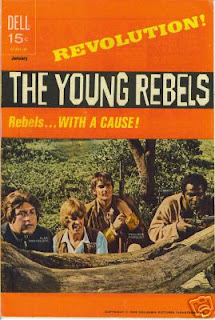By thy rivers gently flowing, Illinois, Illinois,
O'er the prairies verdant growing, Illinois, Illinois,
Comes an echo on the breeze.
Rustling through the leafy trees, and its mellow tones are these, Illinois, Illinois.
Has any state song been more reviled and made fun of?
Yep. Across the river, Iowa's state song is just as bad, if not worse:
From yonder Misissippi's stream
To where Missouri's waters gleam
O! fair it is as poet's dream, Iowa, oh Iowa.
Who decided that states should have official songs to be foisted upon schoolchildren and the audiences of football teams, and who decided that they should be uniformly so awful? And heterosexist?
 I took it upon myself to read the lyrics of all 50+ state songs (some have more than one).
I took it upon myself to read the lyrics of all 50+ state songs (some have more than one). It was dismal. Song after song of nonsense.
This state is full of badgers, this state is full of sod,
This state is full of sandwiches, this state is under God.
Ok, I just made that one up.
New York's is hands-down the stupidest:
New York is special. New York is diff'rent' cause there's no place else on Earth quite like New York and that's why I love New York.
What, "Start spreading the word, I'm leaving today" was taken?
Contrary to what you might think, that nonsense was not composed by a 5-year old, but by Steve Karmen, an accomplished tv commercial jingle writer: "Aren't you glad you use Dial?", "When you say Budweiser," "The Great American chocolate bar."
Maryland's state song is grotesquely bloody:
Avenge the patriotic gore that flecked the streets of Baltimore,
And be the battle queen of yore, Maryland! My Maryland!
Colorado's is all about mass extinction due to over-hunting:
The bison is gone from the upland, the deer from the canyon has fled,
The home of the wolf is deserted, the antelope moans for his dead
Fortunately, they replaced it with John Denver's "Rocky Mountain High" in 2007.

Over half of the state songs are disgustingly heterosexist, making schoolkids and football teams sing about "Aren't you glad everybody is heterosexual? Aren't you glad those pesky gay people don't exist?"
How many times have you heard Indiana's "On the Banks of the Wabash, Far Away," without knowing who ir what was on that riverbank? Some guy's dead girlfriend:
Long years have passed since I strolled thro' the churchyard.
She's sleeping there, my angel, Mary dear,
I loved her, but she thought I didn't mean it,
Still I'd give my future were she only here.
Georgia has Ray Charles' "Georgia On My Mind," in which the guy thinks of his ex-girlfriend while he's in bed with other women.
Other arms reach out to me, other eyes smile tenderly
Still in the peaceful dreams I see the road leads back to you
By the way, when you google "Georgia football player shirtless," what you get is Darian Alvarez, a soccer player from Honduras. Not that I'm complaining.
Before countering with "South Carolina On My Mind" in 1984, South Carolina's state song was a little more graphic about the guy's girlfriend getting with other guys..
Thy skirts indeed the foe may part,
Thy robe be pierced with sword and dart,
They shall not touch thy noble heart!
After that, Michigan's state song about lost love is sort of a relief. The girlfriend is receding into the distance, while the guy moans "What am I supposed to do without you?"
Tennessee has "The Tennessee Waltz," which we had to sing in grade-school music class; "I was dancing with my darling, etc., etc." Missouri has "The Missouri Waltz," which has a whole complicated story about a father reminiscing to his children about his dead wife.
Oklahoma adopted "Oklahoma!" from the Rodgers and Hammerstein musical, which is all about getting married and moving to the land stolen from the Indians:
Ev'ry night my honey lamb and I
Sit alone and talk and watch a hawk makin' lazy circles in the sky
Um...you know that hawk is searching for small animals to kill and eat, right?
Utah's state song is all about Brigham Young, Family with a capital F, and the "No Child Left Behind" Act.
Utah! With its focus on family,
Utah! Helps each child to succeed.
People care how they live.
Each has so much to give.
This is the place!
I just wish these guys were from Mississippi, so there'd be ten of them.
No state song extolled same-sex friendship, and the only one with any beefcake was Alabama's, mentioning two Native American heroes with muscular physiques:
Fair thy Coosa-Tallapoosa
Bold thy Warrior, dark and strong,
Alabama, Alabama, we will aye be true to thee!
Whoops, my mistake. Those are both rivers.
Still, I imagine that grade school kids in Alabama have a lot of fun thinking of dirty meanings to Coosa-Tallapoosa.
New York is special. New York is diff'rent' cause there's no place else on Earth quite like New York and that's why I love New York.
What, "Start spreading the word, I'm leaving today" was taken?
Contrary to what you might think, that nonsense was not composed by a 5-year old, but by Steve Karmen, an accomplished tv commercial jingle writer: "Aren't you glad you use Dial?", "When you say Budweiser," "The Great American chocolate bar."
Maryland's state song is grotesquely bloody:
Avenge the patriotic gore that flecked the streets of Baltimore,
And be the battle queen of yore, Maryland! My Maryland!
Colorado's is all about mass extinction due to over-hunting:
The bison is gone from the upland, the deer from the canyon has fled,
The home of the wolf is deserted, the antelope moans for his dead
Fortunately, they replaced it with John Denver's "Rocky Mountain High" in 2007.

Over half of the state songs are disgustingly heterosexist, making schoolkids and football teams sing about "Aren't you glad everybody is heterosexual? Aren't you glad those pesky gay people don't exist?"
How many times have you heard Indiana's "On the Banks of the Wabash, Far Away," without knowing who ir what was on that riverbank? Some guy's dead girlfriend:
Long years have passed since I strolled thro' the churchyard.
She's sleeping there, my angel, Mary dear,
I loved her, but she thought I didn't mean it,
Still I'd give my future were she only here.
Georgia has Ray Charles' "Georgia On My Mind," in which the guy thinks of his ex-girlfriend while he's in bed with other women.
Other arms reach out to me, other eyes smile tenderly
Still in the peaceful dreams I see the road leads back to you
By the way, when you google "Georgia football player shirtless," what you get is Darian Alvarez, a soccer player from Honduras. Not that I'm complaining.
Before countering with "South Carolina On My Mind" in 1984, South Carolina's state song was a little more graphic about the guy's girlfriend getting with other guys..
Thy skirts indeed the foe may part,
Thy robe be pierced with sword and dart,
They shall not touch thy noble heart!
After that, Michigan's state song about lost love is sort of a relief. The girlfriend is receding into the distance, while the guy moans "What am I supposed to do without you?"
Tennessee has "The Tennessee Waltz," which we had to sing in grade-school music class; "I was dancing with my darling, etc., etc." Missouri has "The Missouri Waltz," which has a whole complicated story about a father reminiscing to his children about his dead wife.
Oklahoma adopted "Oklahoma!" from the Rodgers and Hammerstein musical, which is all about getting married and moving to the land stolen from the Indians:
Ev'ry night my honey lamb and I
Sit alone and talk and watch a hawk makin' lazy circles in the sky
Um...you know that hawk is searching for small animals to kill and eat, right?
Utah's state song is all about Brigham Young, Family with a capital F, and the "No Child Left Behind" Act.
Utah! With its focus on family,
Utah! Helps each child to succeed.
People care how they live.
Each has so much to give.
This is the place!
I just wish these guys were from Mississippi, so there'd be ten of them.
No state song extolled same-sex friendship, and the only one with any beefcake was Alabama's, mentioning two Native American heroes with muscular physiques:
Fair thy Coosa-Tallapoosa
Bold thy Warrior, dark and strong,
Alabama, Alabama, we will aye be true to thee!
Whoops, my mistake. Those are both rivers.
Still, I imagine that grade school kids in Alabama have a lot of fun thinking of dirty meanings to Coosa-Tallapoosa.
























